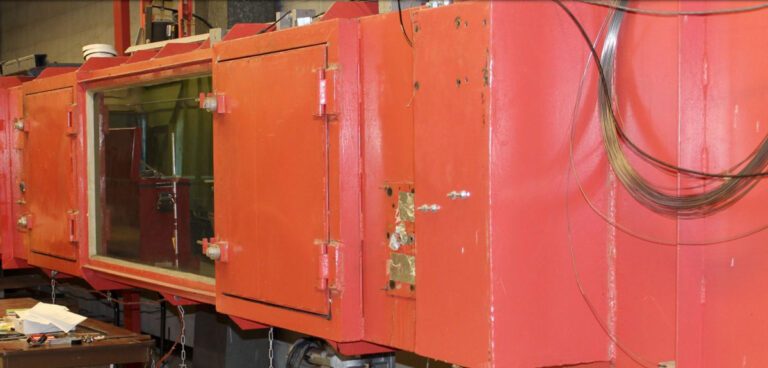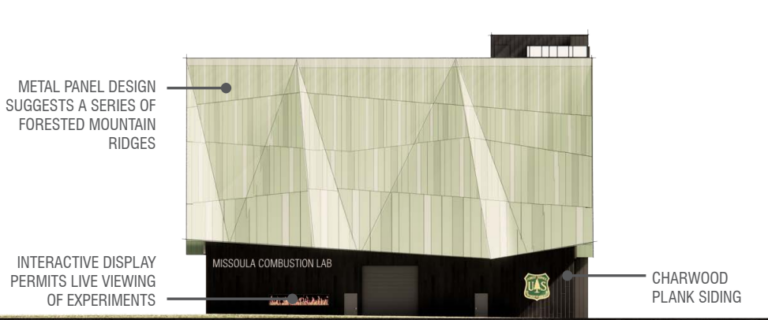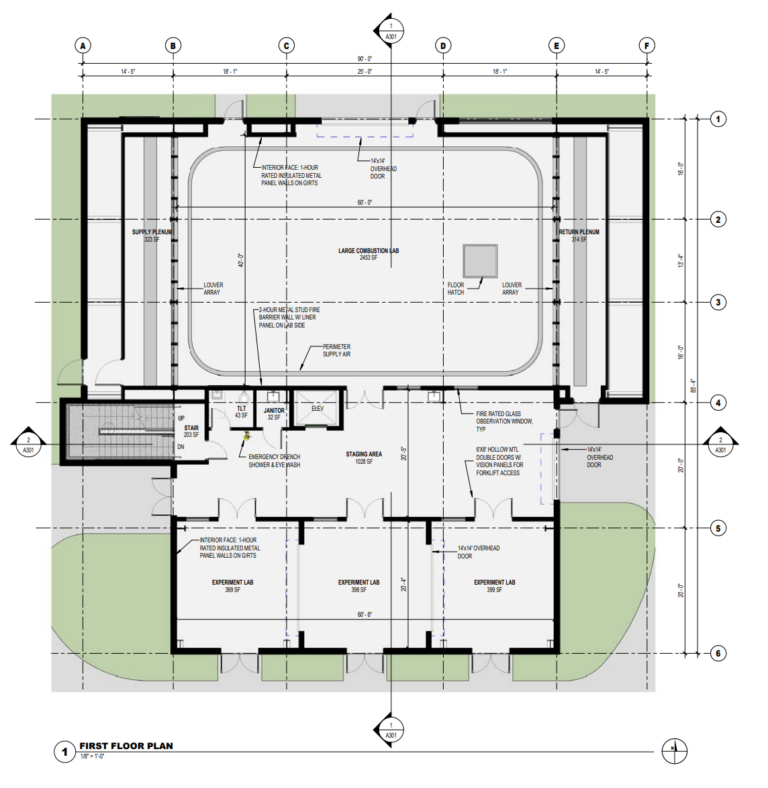- Conduct Wildfire Simulations
- Optimize Weather Stations
- Weather Station Application
- Open Source Materials
- Pilot Upper-Air Profiler

With increasingly severe fire seasons, a new laboratory will allow experiments on extreme wildfire behaviors that cannot be studied anywhere else in the world, crucial to understanding both wildland fire and its mitigation before it’s too late
Although the use of the facilities is increasing by R&D as well as NTDP, effective use for mandated experimental activities is declining because:

The Fire Sciences Laboratory in Missoula, Montana, includes a Burn Chamber and High- and Low-Speed Wind Tunnels, all built in 1960 during the original Fire Lab construction. The large burn chamber is a 40 x 40-foot area with a 60-foot-high ceiling. It supports diverse fire science topics, including fire behavior research, research on physical processes of fire, smoke and emissions research, mandatory fire-retardant testing, and K-12 educational programs.
No experimental facilities outside of Missoula are currently dedicated to wildland fire. Facilities designed for structure fires are remote from the western wildfire expertise, making logistics of scheduling, staffing, and transporting materials difficult and prohibitively expensive. Short-term funding in fire mitigation tends to be directed toward buildings, industry, and detection technology, whereas long-term research is required to deal with large-scale wildfire problems.
The entirety of our operational capability for predicting, training, and mitigating wildland fire is based on the initial work done in the 1960s and 1970s at the Missoula Laboratory. Advances require improving the basic physical sciences as the foundation for more accurate predictions and effective mitigation measures.
A new facility, with a larger burn chamber and three small laboratories, will allow Forest Service Research to conduct the essential fire science and expand collaboration with other Federal agencies, Universities, and State and Local fire authorities. The facility and expanded staffing will allow training of fire management personnel and year-round development of technology on fire retardants used in aerial firefighting and safety equipment for firefighters.
This action plan delineates the essential steps for establishing a state-of-the-art wildland fire research facility equipped with innovative technology and experimental capabilities. To achieve this vision, it is crucial to secure funding, forge partnerships, and construct new infrastructure. With wildfires posing an increasing threat, this facility can play a crucial role in advancing our knowledge of wildfire behavior and enhancing the efficacy of prevention and mitigation strategies. The following critical physical components are required to bring this facility to fruition.




Portugal and Australia have much smaller facilities without environmental controls of humidity and temperature and cannot deal with fire experiments of the size needed for today’s problems.
It isn’t a single, simple widget that needs to be borrowed or rented to use–for example, one piece of equipment is the size of a grain silo, and the equipment in other facilities is not designed around wildland fire. Wildland fires require various experiments at scales different from structural fires. Wildland research needs to be centralized.
At this point, it is almost too late, so we need to act quickly.
The lab could support work being done by Fire & Aviation for retardant testing, Forest Service research, and active work performed by the National Forest Systems. Local universities are prepared to dive into fire experiments as well.
The lab could support 80-90 staff and will cost a few million each year to staff. Our engineers estimate the project to cost $16 to 27.5 million, with $3-4 million for design. Here is the most recent Combustion Chamber Briefing draft.